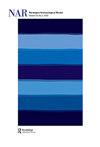北欧维京时代的建筑、社会和仪式。门、住宅和家庭空间
IF 0.8
3区 历史学
0 ARCHAEOLOGY
引用次数: 7
摘要
在20世纪80年代后期,当Cornelia Weinmann(1994)撰写她的博士论文“斯堪的纳维亚房屋建筑”时,我们哀叹的是,在古斯堪的纳维亚文本中几乎没有任何欢迎和直接的家居与生活杂志材料。这不仅是一个具有讽刺意味的事实,也是为什么研究一种文化很有趣,而且确实很困难的原因,因为这种文化对房屋及其内部的理解与我们今天作为考古学家,民族学家或现代人的理解不同。尽管《这所老房子》于1979年首播,但它根本没有任何膨胀的梦幻之家或梦幻之家市场,也几乎没有那种令人发痒的超级个体“谁住在这里?”这些都是今天的房地产电视节目的素材。三十年后,Marianne Hem Eriksen将这种缺乏简单的描述性人种学和房子作为建筑和身体的复杂性转变为她的出发点,并将对门的理解作为她进入部分被遗忘世界的分析入口。房地产电视节目是真正的殖民主义:“我们走遍了乡村,找到了房子,当地人都走了,让我们进去看看房子是否适合你。”玛丽安·赫姆·埃里克森(Marianne Hem Eriksen)在第一部分中讨论的方法是后殖民主义的:“有一栋房子。进出房子和房间是什么意思?她明智地避免了用描述性的民族学方法来描述建筑和工艺。相反,在她的铁器时代晚期房屋遗迹数据库的支持下,她专注于传统铁器和维京时代的三走道长屋的建筑元素的意义,这些房屋有支撑屋顶的内部柱子、支架和檩子。她对这一传统直到维京时代晚期的最后500年的分析确实是一种理论和方法上的选择。事实证明,这是一个多产的作品,因为她的重点是门,也就是说,在房子的解剖结构中,任何外部或主要分区的过渡和/或界限区。门是一种分析工具,使她能够以跨学科的方式查看各种原始材料,例如考古学,建筑学,人类学,语言学,宗教史或诗歌,传奇和历史叙事的仔细阅读。与此同时,或者更确切地说,结果是,她成功地分析了一些案例,以便掌握“门”、“房子”及其“空间”的内涵。通过这种方法,运动和使用成为重要的参数,试图将内部理解为一个有序的空间,而将外部理解为景观中有意义的场景。内部属于住宅的正式建筑,外部属于景观建筑。这意味着无论哪里有传统的房子,建筑师,字面上的“主要建造者”都创造了一个封闭的相互作用的本体本文章由计算机程序翻译,如有差异,请以英文原文为准。
Architecture, Society, and Ritual in Viking Age Scandinavia. Doors, Dwellings, and Domestic Space
In the late 1980s when Cornelia Weinmann (1994) worked on her PhD thesis on ‘Scandinavian housebuilding’ we lamented the fact that there was hardly any welcoming and straightforward Home & Living Magazine material in Old Norse texts. This was not just an ironic truth is was also the reason why it was interesting and indeed difficult to look into a culture that understood houses and their interior in other ways than we understand them today as archaeologists, ethnologists or modern human being. Although ‘This old house’ was first aired 1979, there simply wasn’t any swelling dream-house or housedream market and virtually none of the pseudo-tickling hyper-individual ‘who-lives -here?’ stuff that today’s real estate TV is made on. Thirty years later Marianne Hem Eriksen has turned this lack of a simple descriptive ethnography and the complexity of the house as architecture and a body into her point of departure and made the understanding of the door her analytical entrance into a partly forgotten world. Real estate TV is genuinely colonial: ‘We’ve travelled the countryside, found a house, the natives are gone, let’s go in and see if the premises suit you.’ Marianne Hem Eriksen’s approach as discussed in Part I is post-colonial : ‘There is a house. What does it mean to enter and leave the house and its rooms?’ Wisely, she avoids the descriptive ethnological approach to buildings and craftsmanship. Instead, supported by her database of Late Iron Age house remains, she focusses on the meaning of the architectural elements of the traditional Iron and Viking Age three-aisled long house with roof-supporting interior posts, trestles and purlins. Her analysis of the last 500 years of this tradition until the Late Viking Age as indeed Architecture is a theoretical and methodological choice. It turns out to be a prolific one because her focus is on the door, that is, on the transitional and/or liminal zone of any outer or major partition in the anatomy of a house. The door is the analytical tool that allows her to look at a variety of source materials in an inter-disciplinary approach, such as Archaeology, Architecture, Anthropology, Linguistics, History of Religion or the close reading of poetry, sagas and historical narratives. At the same time or rather consequently, it becomes possible for her successfully to analyse a number of cases in order to come to grips with the connotations of ‘the door’, ‘the house’ and its ‘space’. With this approach movement and usage becomes the important parameters trying to understand the interior as an ordered space in itself and the exterior as a meaningful situation in the landscape. The interior belongs to the formalized architecture of the house, the exterior belongs the architecture of the landscape. This means that wherever there is a traditional house, the architect, literally ‘the chief builder’ has created an ontology of the interplay between the closed
求助全文
通过发布文献求助,成功后即可免费获取论文全文。
去求助
来源期刊

Norwegian Archaeological Review
ARCHAEOLOGY-
CiteScore
2.10
自引率
0.00%
发文量
13
期刊介绍:
Norwegian Archaeological Review published since 1968, aims to be an interface between archaeological research in the Nordic countries and global archaeological trends, a meeting ground for current discussion of theoretical and methodical problems on an international scientific level. The main focus is on the European area, but discussions based upon results from other parts of the world are also welcomed. The comments of specialists, along with the author"s reply, are given as an addendum to selected articles. The Journal is also receptive to uninvited opinions and comments on a wider scope of archaeological themes, e.g. articles in Norwegian Archaeological Review or other journals, monographies, conferences.
 求助内容:
求助内容: 应助结果提醒方式:
应助结果提醒方式:


